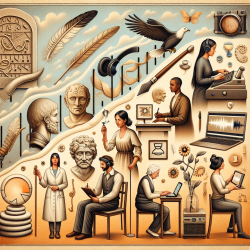Introduction
In the ever-evolving landscape of healthcare education, the role of simulation has become increasingly significant. The Association of Standardized Patient Educators (ASPE) has established the Standards of Best Practice (SOBP) to ensure that simulation-based education is both effective and safe. This blog will delve into how practitioners can leverage these standards to enhance their skills and improve outcomes for their learners.
Why ASPE Standards Matter
The ASPE SOBP are designed to provide a framework for educators working with standardized or simulated patients (SPs). These standards ensure that the educational experiences are consistent, safe, and effective. They are particularly important in contexts where SPs are used to portray patients, clients, or even healthcare professionals in simulation scenarios.
According to the research, five underlying values inform the SOBP: safety, quality, professionalism, accountability, and collaboration. These values are critical in creating simulations that are beneficial for all stakeholders involved.
Key Domains of Best Practice
The ASPE SOBP are organized into five domains, each of which is crucial for the effective implementation of SP-based education:
- Safe Work Environment: Ensures that all stakeholders have a safe psychological and physical learning environment.
- Case Development: Involves creating detailed case documents and training resources that align with learning objectives.
- SP Training: Prepares SPs for role portrayal, feedback delivery, and completion of assessment instruments.
- Program Management: Focuses on quality management practices, including planning, assurance, and improvement.
- Professional Development: Encourages ongoing learning and development for SP educators.
Implementing the Standards
For practitioners looking to enhance their skills, implementing the ASPE SOBP can be transformative. Here are some practical steps:
- Engage in Professional Development: Attend workshops and conferences to stay updated on the latest in SP methodology.
- Collaborate with Experts: Work with subject matter experts to design effective simulation scenarios.
- Focus on Feedback: Train SPs to provide constructive feedback, which is crucial for learner development.
- Ensure Safety: Always prioritize the safety of SPs and learners by following the guidelines for a safe work environment.
Encouraging Further Research
While the ASPE SOBP provide a robust framework, the field of SP-based education is continually evolving. Practitioners are encouraged to engage in further research to explore new methodologies and improve existing practices. By doing so, they contribute to the growth and integrity of SP-based educational endeavors.
Conclusion
The ASPE Standards of Best Practice offer a comprehensive guide for educators working with standardized patients. By implementing these standards, practitioners can enhance their skills, improve learner outcomes, and contribute to the advancement of SP-based education. For those interested in diving deeper into the research, the original paper can be accessed through The Association of Standardized Patient Educators (ASPE) Standards of Best Practice (SOBP).










